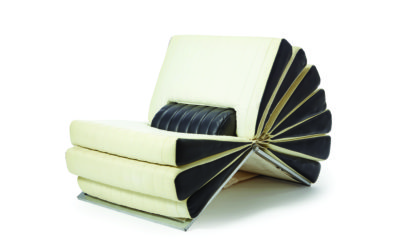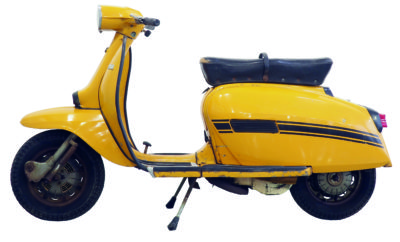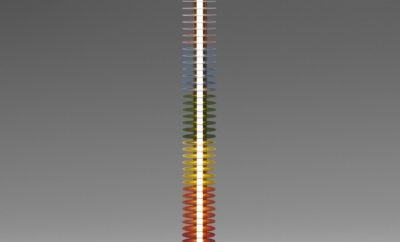 Courtesy of Sotheby's.
Courtesy of Sotheby's.
Design
Delving deeper
Lot 42 Sotheby’s Space Exploration sale, July 20, 2017: Full-scale custom Sputnik 1 model made by Retro Rocket, about 1994. Estimated at $8,000–$12,000, the piece sold for $18,750. Some reasons for the high price:
OPTICS OF ORBIT
Not long after midnight local time on October 5, 1957, a small sphere—almost two feet in diameter and propelled by a large rocket—burst out of what is now the Baikonur Cosmodrome in southern Kazakhstan. About ninety minutes later, it had circled the globe and made history. Sputnik 1, launched by the Soviet Union, was the first artificial satellite in space. A simple device—basically a disco ball with four antennae, a radio transmitter, and ambition—it circled the globe continuously for three months before burning up while re-entering the earth’s atmosphere on January 4, 1958. Even though it left behind only a few scraps of metal, Sputnik’s launch spurred the international space race, and with it, a revolution in design aesthetics.
Sputnik was intended to be flashy and unencrypted (“sputnik” is Russian for “satellite”), launching before far more technologically advanced and ambitious designs. “Space programs had one concern: get things out there,” notes Cassandra Hatton, vice president and senior specialist in Books & Manuscripts at Sotheby’s, New York. Built in just a month, Sputnik was not intended to collect or transmit any substantial information back to earth, like other satellites being developed for celestial pursuit. Instead, the designers meticulously polished its silvery surface so that it could be watched and tracked visually from earth—as well as inspire envy around the globe. A generally aerodynamic form, the spherical shape was also rich in symbolism, aligned with that of the celestial bodies in space. Sergei Korolev, chief designer of the Soviet’s space program, foresaw the design’s impact: “It would forever remain in the consciousness of people as a symbol of the dawn of the space age,” he said.

Courtesy of Sotheby’s.
RETRO REENTRY
Design inspired by the space race— such as tail fins on cars and elliptical, atomic shapes—captured people’s interest in the developing technologies of science and sparked consumers’ desire to participate in the phenomenon. “There is a universal fascination with space,” Hatton says. “Anyone can get excited about it”—whether in memories of looking up at Sputnik 1 or gazing through special glasses to see the solar eclipse last summer. The full- scale model of the satellite reconnects with that excitement, but also embodies the startling dichotomy of the original Sputnik’s size in relation to its accomplishment. At the relatively unassuming diameter of roughly two basketballs and the weight of an adult man, it was a man-made object that was able to go where no man-made object had gone before.
Built in the mid-1990s, nearly four decades after the launch of Sputnik 1, this replica demonstrates the continued interest in humankind’s interaction with outer space. The model was custom hand-built by Retro Rocket, a company known for its high fidelity, limited-edition replications. A companion model is housed at the Armstrong Air and Space Museum in Wapakoneta, Ohio. A number of other replicas exist around the world, particularly in museums, including models by the Russian space program used for test flights before Sputnik’s official launch. “These are materials many people didn’t realize you could buy,” says Hatton. “A lot of people dreamed of being an astronaut, so it’s a special type of material.”
NOT-SO-HIDDEN FIGURES
The lots in the auction were assembled from a wide range of collections. According to Hatton, artifacts related to the space program often emerge from individuals or the family of individuals who worked for NASA, with no broader collections to boast of, as was the case with this model. But buyers derive from a global clientele—from Europe, Asia, and the United States—with American buyers interested particularly in American lots, but all often enchanted by Sputnik. Coming from attics and basements, materials in this category rarely have any precedent for pricing, prompting Hatton to price conservatively, letting the market establish value. Hatton noted participation from a cross section of people, including art and design collectors. While many pieces boast historical and scientific merit, collectors cannot deny their beauty as objects. The Sputnik 1 model was displayed hanging from the gallery ceiling, evoking the view many people would have had—albeit quite a bit closer—when seeing the object actually in flight. “The sale did what I was hoping it would do,” Hatton reports, highlighting the fusion of science, art, and design, and opening this category to new, perhaps unexpected collectors. This model went to a private collection based in the United States.












